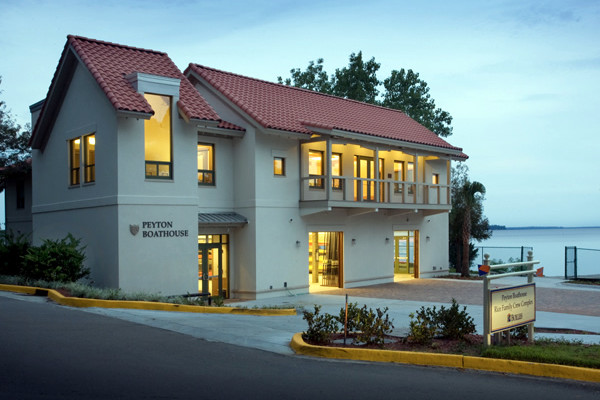Mentality bigger than the boathouse
January 7, 2022
In a secluded corner of campus, right on the coast of the St. Johns river, lies the boathouse. It’s Sunday, and the dim evening sunlight gently skims the walls of this impressive structure. To any rower on any other day of the week, this is their house of pride and pain. Three hours a day, six days a week, student-athletes in the crew program redefine what it means to push mental limits. The most valuable lesson taught by the boathouse is that pain is internal, that it only extends as far as your psyche. Conversely, pushing the boat, letting it slide underneath you for a fraction of a second, and repeating the cyclical stroke is external. It’s what people see, it’s what the coaches see, and it’s what you will see in an honorable or dismaying future.
The sizable doors hide prodigious vessels within the boatbay. Hundreds of pounds heavy and designed to carry nine people, the boats are carried by rowers on their shoulders, procedurally walked out and placed on the river from the dock. After the boat hits the water, rowers rush to get the oars per the coxswains’ commands. The routine never changes: place the oars in the locks, screw them in, and await the next command. Out on the water, whether rowers are tasked with steady-stating at a low stroke rating or rowing at race-pace, the scenery is breathtaking. Something transcendental accompanies the rowing experience, being mere inches away from the great depths of the murky river. Present is a spiritual aspect of rowing away, watching everything in front recede into the distance, while the periphery absorbs new sights. Ultimately, however, all boats come back to the same dock, and all crews return the boats to the boathouse the same way. A beautiful repetition is obvious in the sport- each day, each hour, each stroke.
On indoor days, rowers walk upstairs and take a seat on all-too-familiar ergometers (rowing machines). There is a hum, a synchronized tune of erg-pulling that characterizes the common weariness. Despite the arduous and monotonous task of “embracing the pain” as it’s commonly put, there is much in the boathouse that distracts. Walking up the stairs, plaques with gold lettering embellish the wall, boasting the achievements of eminent Bolles rowers. Numerous, alluring plaques and trophies commemorate the pain of the past rowers who stepped up the very same stairs. If these records of history don’t serve as the beau idéal of the culture of devotion and brotherhood, then nothing does.
By far, rowing is the most technically nuanced sport in existence. Each factor and variable down to the millimeter is critical. Arguably the most vexing part of the whole shebang is a paradox at the heart of rowing: in order to succeed, one must be determined and confident enough to know that they have the ability to triumph over the boundaries. Yet, a rower must lose their sense of self in their crew, for their crew. Everyone has to be on the same page of pushing harder for the sake of those around, and the boathouse serves as a constant reminder of this credo.
Glory is what rowers row for, and the splendor of one’s name on the wall is the stimulus. There’s an abstract element to rowing, a bona fide ecstasy to show to others your physical as well as mental ability. There’s an element of proving it to yourself, that the hours you’ve put in aren’t in vain.
This is the boathouse, a Bolles rower’s house of pride and pain.

